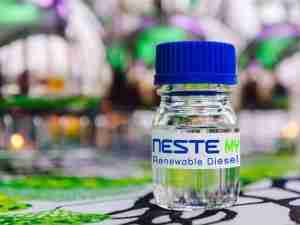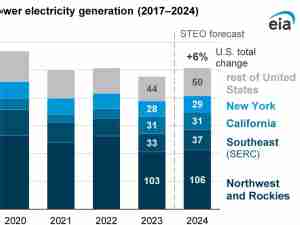North Dakota rules to tame volatile crude before rail shipment
By: Reuters | Dec 09 2014 at 07:01 PM
North Dakota has approved strict new standards for oil, requiring every barrel of crude be filtered for dangerous types of natural gas in order to make crude-by-rail transport safer.
The new requirements come as federal, state and local officials grapple with how best to ensure the safe transport of North Dakota’s crude oil, which has been linked to a string of fiery crude-by-rail explosions, including one last year in Quebec that killed 47 people.
Governor Jack Dalrymple and the two other members of the North Dakota Industrial Commission (NDIC) unanimously voted on Tuesday to require the more-than 1.1 million barrels of oil produced each day in the state be run through equipment that can remove much of the propane, butane and other volatile natural gas liquids (NGLs) naturally found in crude.
“There is now no situation where stabilization of the crude oil will not be occurring,” Dalrymple, a Republican who took office in 2010, said during the vote on Tuesday at the state capitol.
Because most of the oil extracted in the United States via hydraulic fracturing, commonly known as “fracking,” is transported by rail, North Dakota’s rules could influence regulatory decisions in Colorado, Wyoming and new shale fields.
The NDIC, which has direct oversight over oil wells, is requiring producers to heat crude to at least 110 degrees Fahrenheit at a pressure of 50 pounds per square inch (psi) starting next April.
The regulations are designed to remove NGLs and leave the crude oil with a vapor pressure of no more than 13.7 psi. That would be similar to the pressure for automobile gasoline.
“This is all designed so that everyone knows the crude oil is being treated,” said Lynn Helms, head of the state’s Department of Mineral Resources, which reports to Dalrymple and the NDIC.
The standards do not address the complex question of what to do with the NGLs, which become a hyper-concentrated explosive material when extracted from crude. Few pipelines exist in the state to transport NGLs, meaning they would have to be transported via rail.
Oil producers will be allowed under the standards to use so-called “heater-treaters,” or towers that use heat to separate water and emulsion from crude at well sites. Heater-treaters are already widely deployed near wellhead collection systems.
Producers could also choose to introduce larger “stabilizers” with similar functions located at central hubs, to sanitize the crude.
HOW MUCH?
Compliance with the new rules will increase costs at a time when oil prices are plunging and producers can least afford it.
How much money varies widely depending on the size, location and infrastructure of each oil producer, but generally the costs will disproportionately affect smaller producers with less capital, said Helms.
“We haven’t come up with any kind of realistic estimate,” he said in an interview after the vote.
But, he offered an anecdote that shed light on the industry’s flexibility.
In the last three weeks, Helms sent inspectors to 300 heater-treaters throughout the state, finding that 55 percent were already operating within the new guidelines. Roughly 33 percent were operating at lower temperatures and thus will have to increase them, a step that will increase costs.
About 12 percent of the 300 heater-treaters weren’t applying heat at all to crude oil, despite air temperatures far below freezing.
“Those 12 percent were predominantly smaller producers who were cutting costs, and they will be affected greatly by the new standards,” Helms said.
INDUSTRY’S IMPACT
The North Dakota Petroleum Council, an industry trade group, has repeatedly assailed commissioners’ plans to impose uniform temperature and pressure standards, regardless of the time of year. A council spokeswoman on Tuesday declined to comment, saying the group would review the new standards with its members first.
Yet as Reuters reported in September, any new regulation is deeply controversial among the state’s oil companies, especially the larger producers which already feel they are disproportionately affected by regulations.
Hess Corp, alongside Whiting Petroleum Corp and Continental Resources Inc, the state’s largest oil producers, had lobbied the NDIC during the rule-making process to tweak various aspects.
Initially, the NDIC was going to require crude oil be processed at temperatures as high as 120 degrees F, but oil producers pointed out polyethylene pipeline could melt at that temperature, voiding a manufacturer’s warranty.
State officials changed their minds, lowering the temperature and pressure thresholds.
“We’re confident that the revised numbers not only protect the gathering system pipelines, but achieves our 13.7 psi goal,” Helms said.
The new standards will take effect in April to coincide with the second quarter of 2015, Helms said.









